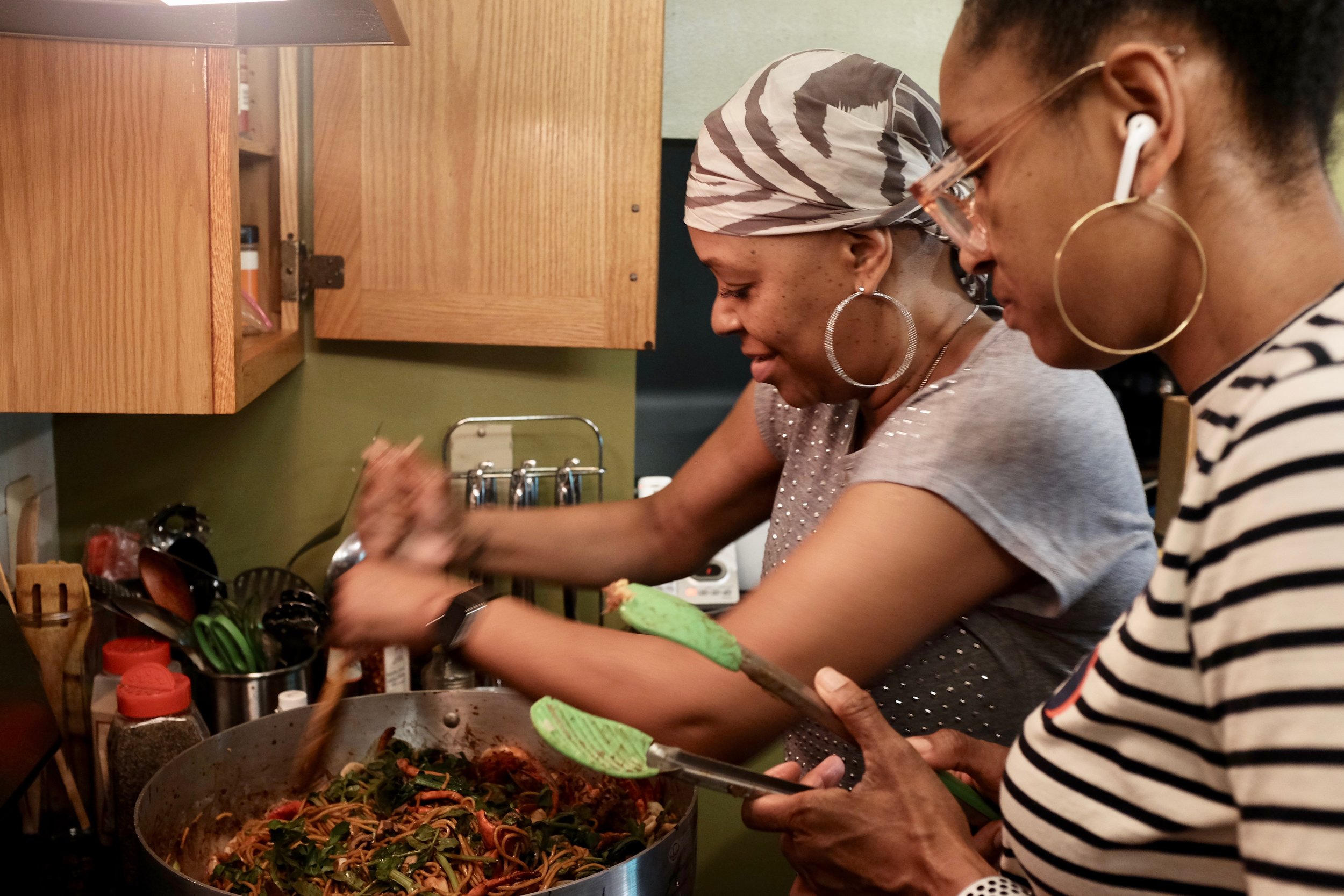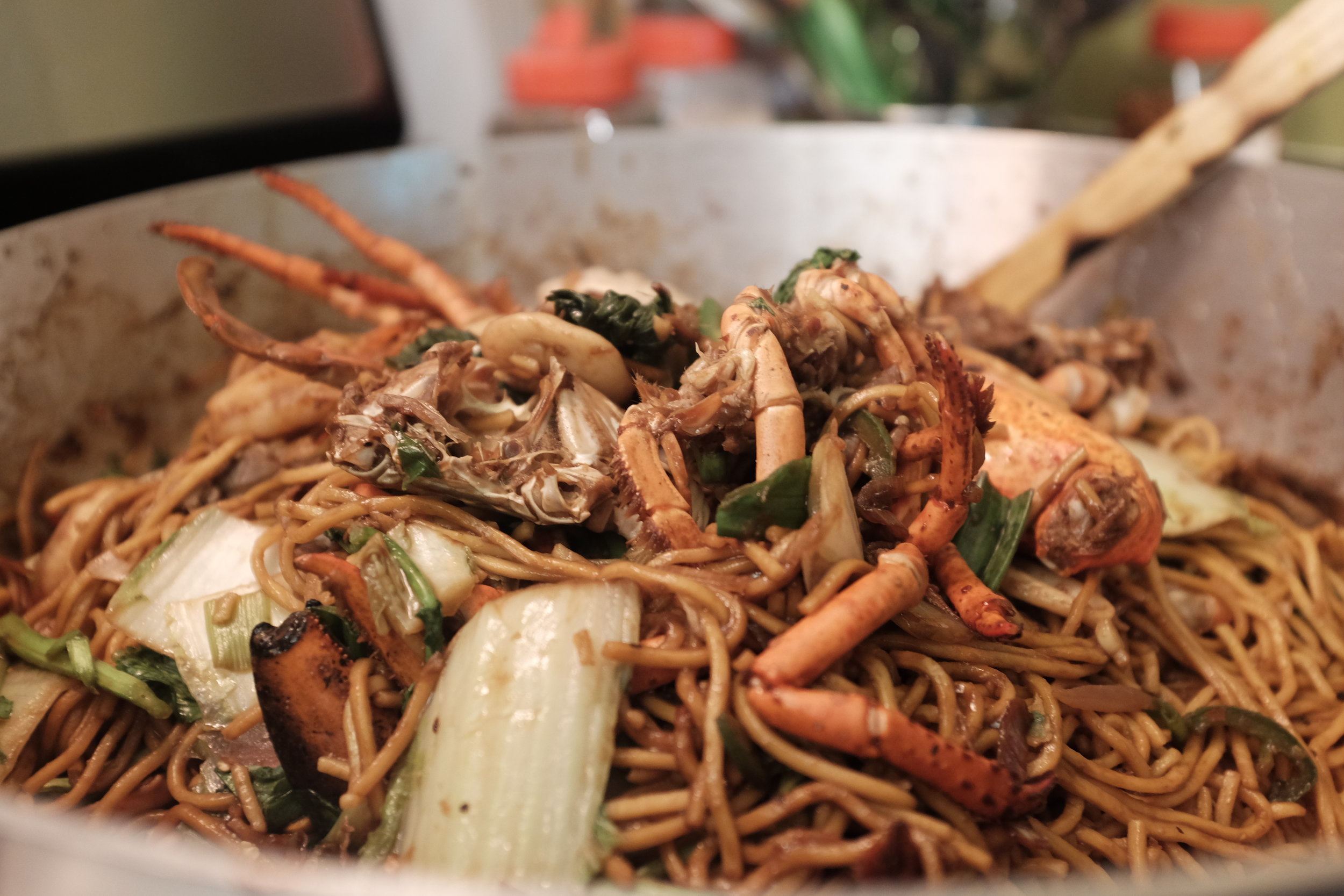This weekend, I took the train to New Brunswick, NJ, where my sister Sarah lives, to hang out for the afternoon. My other sister Andrea had driven up from Virginia the day before, and I was looking forward to just lounging around and hanging out with them. We didn't make any specific plans beforehand, but the baseline expectation when one or more of my sisters get together is that there's guaranteed to be a ridiculous amount of eating of delicious food going on. And drinks. Lots of drinks. This time was no different.
Andrea getting busy.
My sisters can cook their asses off. They're the kinds of chefs that can look at a recipe, and improvise, subsitute, remix it, and make it their own, on pure instinct.
Back in the day, when I first moved to Brooklyn and was making $4.63 an hour working at the Gap (where was Bernie Sanders back then?), Andrea and I would pick up a half chicken and fried rice meal from the bulletproof Chinese restaurant, and she'd throw some watercress and a handful of other fresh veggies and hot peppers in there, and elevate that shitty takeout into a meal.
After a quick recon of what was in the freezer, followed by a brief run to the Asian grocery store for some fresh ingredients, the girls whipped up a lavish seafood noodle dish full of lobster, shrimp, crabs, squid, with crisp bok choi, scallions and a delicous spicy soy glaze.
I don’t know if these pictures do justice to the amount of food that Andrea and Sarah whipped up. But it was delicious, and we thoroughly enjoyed sitting around crunching through various types of seafood shells with gusto. And you better believe I brought home enough for several sets of leftovers (some of which I enjoyed at work today). Let’s do it again soon.















